Fujifilm FinePix S3 Pro camera shown in this review and lens Nikon 50mm 1: 1.8D AF Nikkor (MKIII) Radozhiva was presented by Sergey Gordubey. From Evenkia (north of the Krasnoyarsk Territory) the parcel with the equipment went for more than a month. I express my deep gratitude to Sergey for such project assistance. Camera and lens were sold and funds credited here.
Fujifilm FinePix S3 Pro is legendary digital SLR camera, which was introduced back in 2004, but is still appreciated by many photographers to this day. The main strength of the camera is a special matrix - Fujifilm SuperCCD SR II, consisting of two types of photodiodes arranged in a special way and allowing to achieve a large dynamic range and excellent color reproduction. The very name of the matrix 'Fujifilm SuperCCD SR'already hints at dynamic range, where' SR 'is'Super dynamic Range '-' Super Dynamic Range '. How the SuperCCD SR matrix is arranged and functions can be viewed here.
Fujifilm SuperCCD technology was introduced in 1999 and has three generations: SuperCCD I, II, III. In 2003, with the release of the fourth generation of sensors, the technology branched out into SuperCCD HR (high resolution) and SuperCCD SR (high dynamic range). SuperCCD HR technology has survived to its eighth generation (counting from the beginning), while SuperCCD SR has only been updated to SuperCCD SR II once. In 2008 SuperCCD HR and SuperCCD SR technologies were merged and upgraded to SuperCCD EXR. In 2011, Fujifilm ditched the SuperCCD EXR with its special shape and sub-pixel arrangement. CMOS technology, with its conventional Bayer pattern, won, but the experiments did not end there - Fujifilm can still surprise with something unusual in our time :).
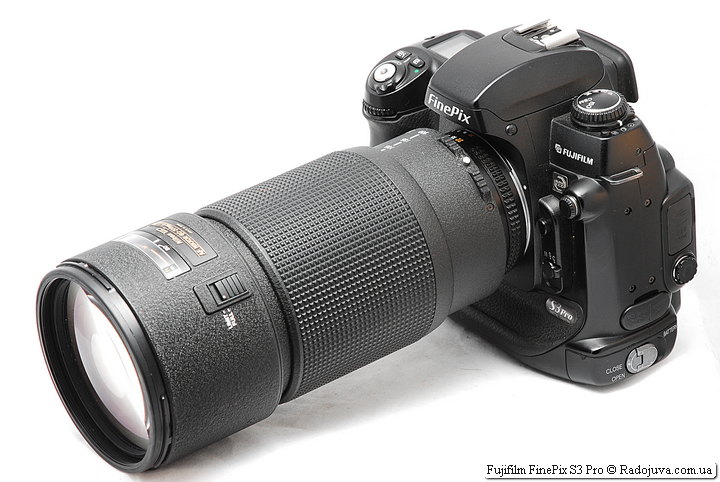
Fujifilm FinePix S3 Pro with lens Nikon ED AF Nikkor 80-200mm 1: 2.8D (MKII)
Below is the evolution of the Fujifilm FinePix CZK:
- Fujifilm FinePix S1 Pro - January 2000, based on the film Nikon F60 (aka Nikon N60), the first generation SuperCCD. Matrices for the Fujifilm FinePix 4700 Zoom and 4900 Zoom compacts were manufactured using the same technology.
- Fujifilm FinePix S2 Pro - January 2002, based on the film Nikon F80 (aka Nikon N80), SuperCCD III (the matrix third generation) Fujifilm F601 Zoom, S602 Zoom, and M603 compact matrices were manufactured using the same technology.
- Fujifilm FinePix S3 Pro - February 2004, based Fujifilm FinePix S2 ProSuperCCD SR II matrix (second generation SR matrix)
- Fujifilm FinePix S3 Pro UVIR - August 2006, upgraded Fujifilm FinePix S3 Pro for shooting in IR (Infra Red) and UV (Ultra Violet) spectra.
- Fujifilm FinePix S5 Pro - September 2006, based Nikon D200, a slightly upgraded SuperCCD SR II matrix (similar to the one installed on the Fujifilm FinePix S3 Pro).
- Fujifilm FinePix IS Pro - June 2007, Revamped Fujifilm FinePix S5 Pro for shooting in IR (Infra Red) and UV (Ultra Violet) spectra.
Yes, that's right, there is no intermediate model between S3 Pro and S5 Pro because in the east they do not like the number 4. All Fujifilm FinePix SLR cameras have an APS-C type sensor with crop factor 1.5 X, and are analogues of cameras Nikon DX.
Fujifilm FinePix SLR cameras have omitted the use of first-generation SuperCCD SR arrays, which were used by the Fujifilm F700, F710 and S20 Pro compacts. And also missed the second generation SuperCCD, which were the Fujifilm Finepix 6800 Zoom and 6900 Zoom.
All Fujifilm FinePix SLR cameras were built on the basis of Nikon DSLRs, both film and digital, and therefore have a Nikon F mount and are compatible with Nikon lenses and other add-ons (flashes, remote controls, boxes, etc.).
Until the first digital SLR camera Fujifilm FinePix S1 Pro Nikon and Fujifilm also collaborated and produced quasi full-format digital SLR cameras Nikon E / Fujifilm Fujix DS.
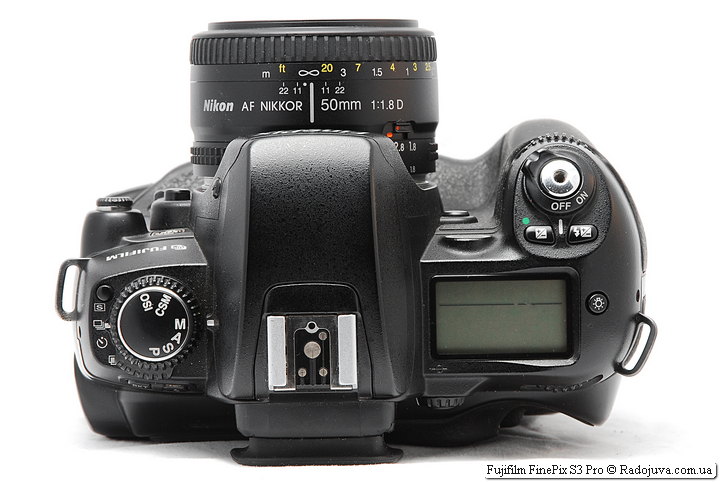
Fujifilm FinePix S3 Pro with lens Nikon 50mm 1: 1.8D AF Nikkor (MKIII)
Chassis S2 Pro and S3 Pro (from this review) is built on the basis of the Nikon F80 film SLR camera (for America it was produced under a different name - Nikon N80). A camera is built on the basis of the same camera. Nikon D100... In my opinion, due to the unfortunate main command dial with which ISO is selected and custom CSM functions, all of these three cameras are - S2 Pro, S3 Pro and D100 they have the worst control of all the digital cameras with Nikon mount I have ever used.
S3 Pro, like Nikon D100 and S2 Pro, uses a focus system Multi-cam 900 by 5 focus points, the center point is cruciform. Responsible for exposure 10-segment SPD sensor... The ISO range is small - from 100 to 1600 units, you can select ISO values 100, 160, 200, 400, 800, 1600. Functions Auto ISO not on the camera. Minimum excerpt shutter - 1/4000 s, and excerpt sync with flash is 1/180 s. The camera is designed to use old flashes that work in automatic D-TTL mode. Modern flashes will not work with S3 Pro in TTL or I-TTL mode. And it’s also very inconvenient that the value excerpts and apertures are changed only by half-stops (step 0.5 EV).
Too bad Fujifilm FinePix S3 Pro does not support auto metering exposure with lenses without CPU contacts (i.e. manual).
The S3 Pro uses a small two-inch display and 235.000 dots. The display, by modern standards, is very weak and is more suitable for setting menu options. There are two additional monochrome displays for quick setup of some parameters.
Depending on the selected dynamic range mode, the S3 Pro can either shoot at 2.5 fps or around 1.5 (RAW), 1.1 (JPEG FINE), 1.0 (JPEG NORMAL) fps. The following is placed in the camera buffer:
- 12 frames in JPEG mode 12 MP Fine in standard dynamic range mode
- 7 frames in RAW mode in standard dynamic range mode
- 9-10 frames in JPEG 12 MP Fine mode in high dynamic range mode
- 3 frames RAW HDR
It's important: Memory card writing speed CF is about 2 MB/second, and recording one photo in RAW WIDE quality is about 12 seconds. This applies even to very fast memory cards.
It's important: memory cards CF those larger than 4 GB take a very long time to format and initialize with the camera. Optimal use of cards CF 4 GB or less (recommended by the instructions). In this case, memory cards of 8, 16, 32 GB can use the entire memory capacity, but there may be a very long delay after turning on the camera, which is spent on initializing the memory card (can be minutes).
It's important: The camera is best used with 'H' type XD memory cards. Such cards are only available in 512 MB, 1 GB, 2 GB (very rare). Marking 'H' indicates a high data write speed. With these memory cards, recording a single picture in RAW WIDE quality is about 5 seconds, and the recording speed is about 5 MB/s. At the same time, in the official characteristics of such cards, it indicates that the maximum write speed should be at the level of 4 MB / second. Slower XD cards like 'M' and 'M+' are slightly slower.
It's important: This camera does not work with Micro adapter SD -> XD.
VERY IMPORTANT: The image review functions Menu->IMAGE DISP.->ON and Menu->IMAGE DISP.->PREVIEW greatly reduce frame buffer and significantly slow down the recording of pictures on the memory card. It is recommended to use the Menu->IMAGE DISP.->OFF function.
It's important: when frame buffer completely filled and the camera cannot take the next shot, on the secondary monochrome display (above the main color display), the remaining frame counter changes its background to a dark background. As soon as the background becomes light again, you can take at least one more photo. This makes it easy to know when you can continue shooting, which is very important when shooting with 'WIDE' dynamic range in 'RAW' format (when the files weigh 25 MB, and wait for one frame to be recorded on the cards CF account for 12 seconds).
It's important: Frame buffer data is written faster when shooting is stopped. If shooting continues, each individual picture will take significantly longer to be recorded to the memory card. Most likely, the recording of already received frames from the frame buffer to the memory card slows down due to the distribution of processor power for processing each new frame.
I want to clarify that RAW files (.'RAF') use 14-bit color depth and recorded without compression (i.e. no data loss due to compression). RAW files are 25MB in 'WIDE' wide dynamic range mode and 12MB in standard dynamic range mode (only S-pixels are encoded). The camera takes pictures with a maximum size of 4256 X 2848 pixels (12.1 megapixels).
The S3 Pro has a Live View mode. Fujifilm is 3 years ahead of Nikon in Live View. The first cameras with Live View were Nikon D3 и D300presented simultaneously in August 2007. Fujifilm overtook Canon, which 40D and 1D Mark III with Live View function was presented in the same summer of 2007 (Canon EOS 20Da is not taken into account, because it is intended for specific work). True, the S3 Pro's Live View is a bit stripped down:
- Runs a maximum of 30 seconds. The timer with the remaining time is displayed.
- The picture is displayed only in black and white.
- Only manual focus is available.
- There is no quick button to enable Live View.
- While Live View is on, you cannot shoot. To release the shutter, you must exit the Live View mode.
- An increase in the central region of the image is available, but only twice.
- The 'Live View' in the camera is called 'Live Image'.
- There is no way to change the exposure value, only increase or decrease the brightness of the image displayed on the display is available.
- When Live View is turned on, the batteries run out quickly.
In general, such a Live View can be useful only in rare cases :)
Fujifilm FinePix S3 Pro and Fujifilm FinePix S5 Pro are two truly legendary DSLR cameras. Despite the fact that they have completely different body and controls, the quality of images from both cameras is very similar. Fujifilm claims that the S5 Pro uses a modified Fujifilm SuperCCD SR II sensor, but if you dig around the global web, you can say with certainty that the S5 Pro has only changed the low-pass filter, which is designed to combat moiré. In general, the thinner filter on the S3 Pro can make it easier to achieve sharper images than on the S5 Pro. Actually, because of this, many users like the image quality from ProTroyka more than from ProTroyka. On the other hand, there are a lot of opinions that the S5 Pro has a slightly nicer color, and a little less noise, since the S5 Pro, in addition to the updated low-pass filter, has also updated the signal processing hardware, which allowed expanding the ISO range by one notch. Personally, I would prefer to use the newer - S5 Pro.
The S5 Pro and S3 Pro are not the cameras that should be bought for high ISO settings - they are primarily interesting for their dynamic range and color reproduction, which are revealed in full force only at low ISO values. I am sure there will be many people in the comments to this review who would argue that the S3 Pro's high ISO noise pattern is very similar to film grain.
Below is a diagram with the evolution of Super CCD matrices:
Some useful observations on the S3 Pro:
- The camera loves well-charged batteries and rechargeable batteries and discharges them very quickly. Perhaps the charge level controller on the camera, which I visited in review, is old and does not quite correctly determine the charge.
- S3 Pro does not have a Russian-language menu.
- The camera uses a large full-frame mirror, which it inherited from S2 Proand the one from Nikon F80 (N80). The shutter sound is quite quiet and pleasant.
- The combo body is an indispensable thing when shooting in a vertical (portrait) position. Models S1 Pro and S2 Pro lack a duplicate shutter button in portrait position.
- The joystick does not have a central button.
- On the body of the S3 Pro are: USB 2.0, IEEE 1394 (Firewire), video output, DC-IN external power connector (for connecting AC-5VX AC adapter), remote control connector, PC Sync connector for studio flashes and a hole on the button shutter release for the old style shutter cable.
- I would like to have a more accurate automatic white balance, sometimes the camera 'guesses' it not quite right. This is a major flaw that has been substantially corrected in the newer camera. Fujifilm FinePix S5 Pro.
- The built-in flash always fires in D-TTL auto mode and cannot be used in other modes. As external flash I used SB-900, which works on the S3 Pro in any mode except I-TTL. In addition, the S3 Pro does not support high-speed sync.
- The S3 Pro has an auto focus assist lamp and a button to illuminate additional monochrome displays. It's funny, but one monochrome display has a green backlight, and the other is orange.
- Shooting/Drive mode switch lever (Standard, Burst, Self-timer, multiple exposure) has a lock button to prevent accidental shift.
- There is also a button for previewing the depth of field. It cannot be programmed for any other function.
On the S3 Pro, you can choose from two film simulation modes: F1 for soft tones, which is great for portraits, and F2 for rich shots, which is great for landscapes and other shooting where vivid color and contrast are required. Unlike F1, F2, in normal STD (standard mode), you can separately adjust the gradations of dynamic range, color saturation, contrast amount, and sharpness for pictures.
UPDATE 1
Fujifilm FinePix S3 Pro+ Nikon AF Nikkor 85mm 1: 1.4D.
Source RAW (WIDE 2) and JPEG (FINE, 12 M, WIDE 2) can be viewed and/or downloaded here (Google Drive Gallery).
Source JPEGs (FINE, 6 M, WIDE 2) per lens Nikon 50mm 1: 1.8D AF Nikkor (MKIII) can be viewed and/or downloaded here (Google Drive Gallery).
UPDATE 2
Examples of photos on HELIOS-44M 2/58 and camera Fujifilm FinePix S3 Pro with readers of Radozhiva shared by photographer Alexander Gvozd.
UPDATE 3
My photo examples Carl Zeiss Planar 1,4/50 ZF.2 T* and a Fujifilm FinePix S3 Pro camera, made according to the method Zero JPEG, can download/view here (Google Drive gallery, 60 photos).
UPDATE 4
All sample photos in the gallery below were obtained by the rules ZERO JPE on the lens Sigma Zoom DC 18-250mm 1:3.5-6.3 DC MACRO OS HSM.
JPEG source files ('.jpg') can be download from this link (50+ photos, Google Drive gallery).
It's a shame that Fujifilm's SuperCCD SR technology has been abandoned. Only four SLR cameras are built on its basis: S3 Pro, S3 Pro UVIR, S5 Pro and IS Pro, in fact, with the same sensor. Similar matrices were also used on digital cameras Fujifilm F700, F710 and S20 Pro (the difference in the arrangement of R-pixels) It is impossible to even imagine what would happen to image quality if this technology were finalized, for example, applied to the manufacture of a full-format camera. By the way, if we take synthetic tests, then modern not cheap the Nikon D4s camera, introduced in February 2014, loses in dynamic range to the ancient 'wooden' Fujifilm FinePix S3 Pro, introduced back in 2004 (confirmation link). But 10 years have passed! But I'm glad Fujifilm is one of the few companies that is trying to update the matrix paradigm with conventional Bayer patternlaunching their X-Pro1, X-T1, X-E1, X-E2, X-M1 mirrorless cameras with X-Trans CMOS sensor.
RAW / RAF Conversion, HYPER UTILITY HS-V3
Render original RAW files (with '.RAF' resolution) is best done with the old original utility Fuji Hyper-Utility HS-V3... For the best quality, you should configure the converter like this. On modern operating systems, this converter may not work, or it will require many tricks to install it. The repackaged version (everything superfluous has been cut out) optimized for working with Windows 7/8/10/11 can be download from this link... Your use of the Fujifilm Hyper Utility HS-V3 remains entirely at your own risk.
Also, Adobe Lightroom and Adobe Camera Raw (a built-in plugin in Adobe Photoshop) allow you to work well with Fujifilm FinePix S3 Pro RAW files. In my opinion, if there is a desire to use third-party RAW converters, then it is best to use Fuji Hyper-Utility HS-V3 to convert source RAW files (with '.RAF' resolution) to TIFF format with 16-bit color depth ( the output should be files of 70-75 megabytes each), and later TIFF files are already processed by third-party converters, such as Capture One, Lightroom and any others. The TIFF format allows you to save the correct color reproduction (which third-party converters cannot provide), a resolution of 12 MP and a data reserve for easy manipulation with source files.
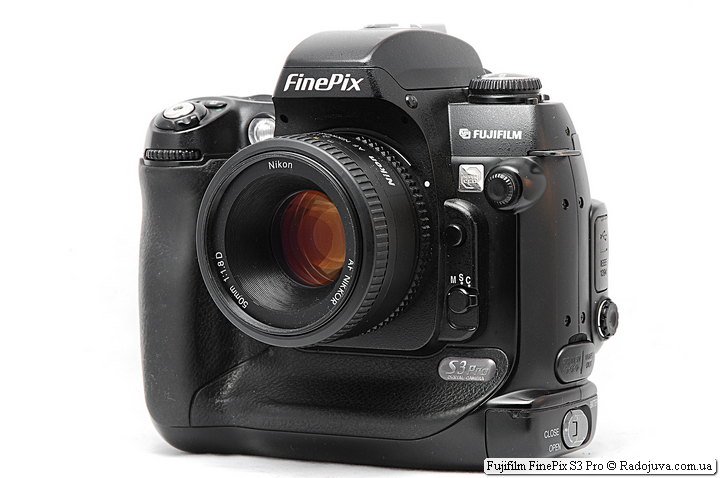
Fujifilm FinePix S3 Pro with lens Nikon 50mm 1: 1.8D AF Nikkor (MKIII)
Results
Nowadays, the Fujifilm FinePix S3 Pro is considered a morally obsolete camera. But many true artists photographers appreciate it to this day because of the unique sensor with a large dynamic range and pleasant color reproduction. This is one of the few cameras with which you can immediately get a wonderful result when shooting in JPEG format, without long dances with a tambourine over the conversion and processing of RAW files. For leisurely creative shooting, especially for portrait shooting - S3 Pro is a real find, especially since it is very cheap. Indeed, newer Fujifilm FinePix S5 Pro in almost every way better than its predecessor.
Comments on this post do not require registration. Anyone can leave a comment. Many different photographic equipment can be found on AliExpress.
Material prepared Arkady Shapoval. Training/Consultations | Youtube | Facebook | Instagram | Twitter | Telegram

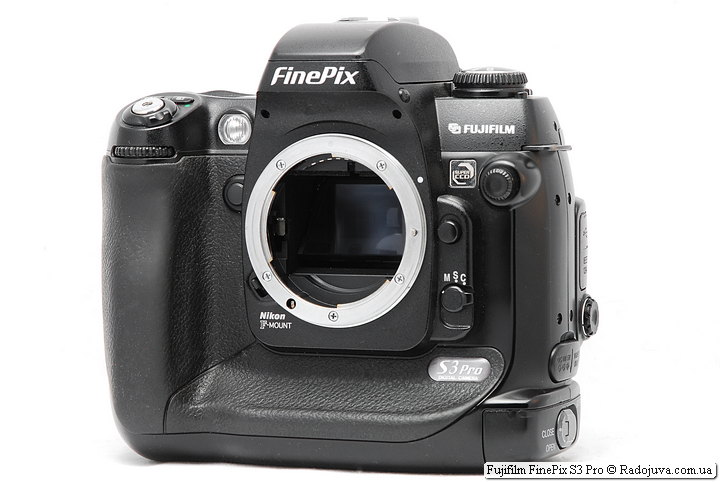
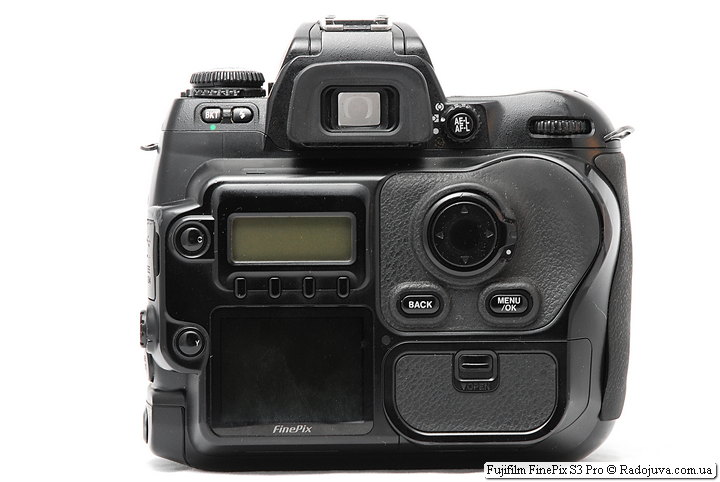
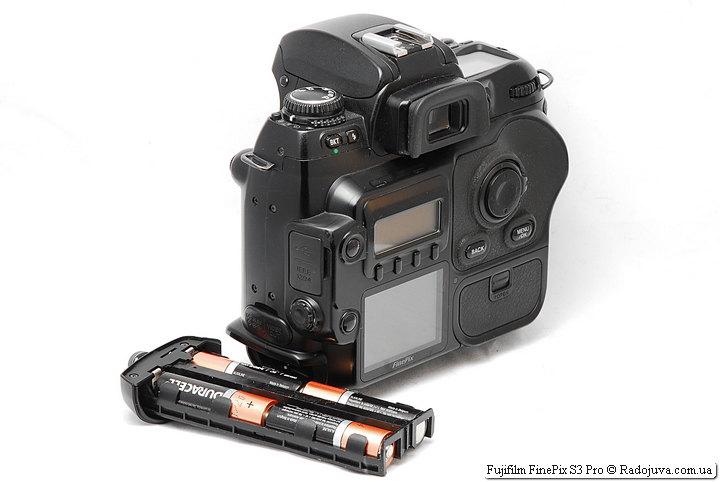
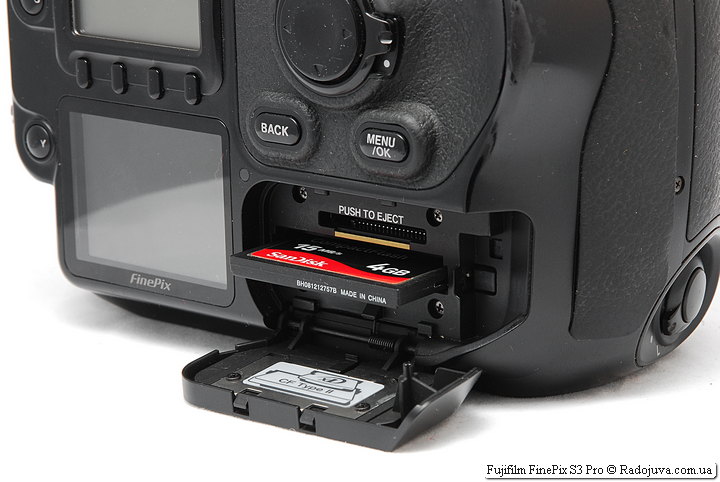




























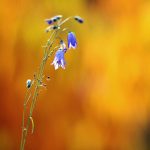
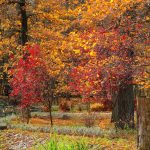
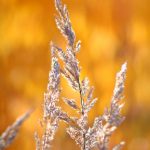
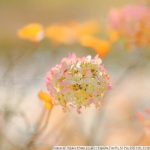
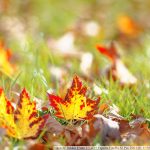


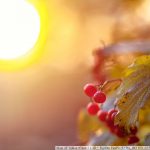
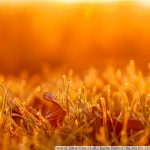


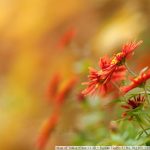

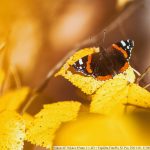


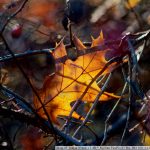
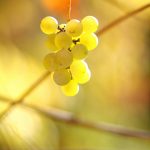





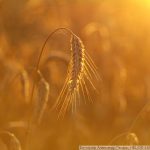





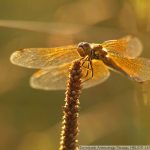

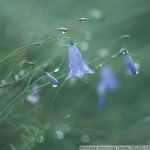

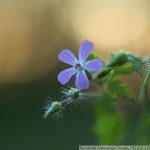


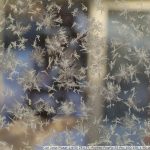





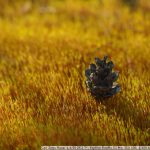
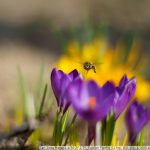



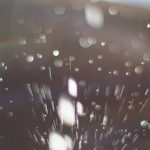
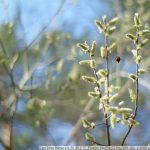
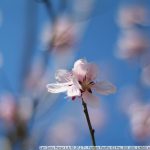
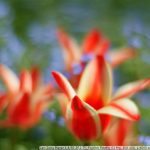


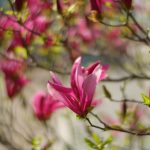
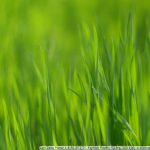




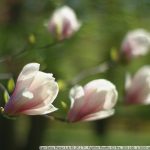
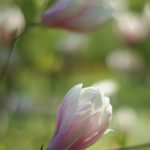
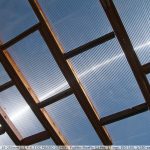
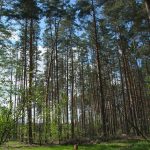


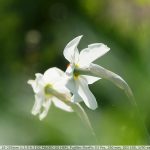






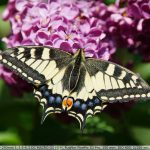
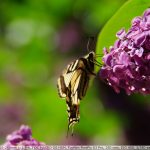
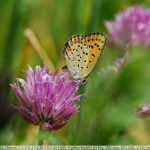

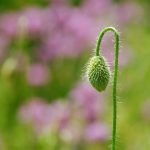





Good day.
I took care of buying a portrait lens for Fuji S3. And preferably for "three kopecks"
Since it’s not easy to manipulate on S3, I rejected non-autofocus options.
I didn't really like Nikon's 85 / 1,8, but I don't have money for 1,4 - I photograph for myself.
Comparing Tamron 90 / 2,8 and Tokina 100 / 2,8, the latter clearly seemed better.
Photos are more voluminous and lively. Therefore, Tokina 100 / 2,8 is still the main candidate.
A huge request to the owners of Fuji S3 / S5 to share their experience,
who uses what kind of portrait lenses on these cameras.
Criticism is also welcoming.
Thank you in advance for your advice.
Mikhail, I had several lenses on s5 - 17-55 2.8, 12-24 4, 35 1.8 G, 85 1.4 D, as well as a little 50 1.4 g and a zeiss 28 2.8. In general, I didn't like 12-24 the most, but maybe it was a bad copy. I lacked sharpness on it. The 17-55 did quite well as a versatile zoom. The long end gave a nice picture. The five generally love sharp and contrasting optics. But I didn't like it at the long end at infinity. As I later found out, this is such a "bug" of the lens itself. It was conceived as a reportage, not as a landscape.
Further, 85 1.4 of course showed an excellent plastic picture, a wonderful boke. For a front / chest portrait, what you need. But for me it’s a long one, I prefer 85-ka on a full frame, and for crop this role is suitable for 58 1.4, which is immensely expensive. But the picture from him is really beautiful and plastic. Further, the Zeiss works on it perfectly and give a beautiful picture. But there is no autofocus.
50 1.4 G is quite good and can be taken. I did not notice any problems. Although the picture with sigma 50 1.4 or 35 1.4 art. Fujiki just love this kind of optics.
And the last one on the list is 35 1.8. Surprisingly, this cheap lens plays very well with the top XNUMX and gives an excellent picture. The only negative is the slight distortion that it introduces. Otherwise, there are no complaints about its cost.
In the end, I sold out most of the lenses, as it was the second system and at some point I didn’t shoot much and became interested in film. Only 35 1.8 remained, as a universal lens. Actually a couple of photos from this bunch, so as not to be unfounded:
https://farm5.staticflickr.com/4398/37174571722_6f32a34557_b.jpg
https://farm5.staticflickr.com/4421/37156653016_d7ed459415_b.jpg
https://farm5.staticflickr.com/4340/36508866114_726b8d3630_b.jpg
https://farm5.staticflickr.com/4437/37204125271_5fd1738fea_b.jpg
https://farm5.staticflickr.com/4428/36949760880_7557f33749_b.jpg
https://farm5.staticflickr.com/4363/36949747460_5bffae0700_b.jpg
All chamber jpeg. It doesn’t pretend to be any kind of art, so I went to visit the country, took it to shoot. Just to demonstrate the camera-lens bundle.
Now on your question. You want to put a macro lens on a triple - probably not a bad idea. On the top five, it would definitely be nice given its soapiness. There is never too much sharpness. As for the three - it's hard to say, I didn't shoot her. But given its 6 megapixels, I think it will be good. And besides, there will still be a macro lens, not just a portrait lens. I would also choose tokin rather than tamron. Tamrons, as I tried to shoot with them, have some unpleasant rigidity in the drawing and the glass gives some kind of shade. Although this may not apply to this lens.
For myself, I would not take such a lens for portraits. Firstly, because the focus is already quite long (and I don't like such “long” lenses for a portrait), the aperture will also be 2.8, not 1.8, and even less 1.4. That is, at this stage it is already possible to take some 70-200 and it will not be worse, but more universal. By the way, I saw pictures from the 2nd 70-200 - it goes very, very well with s5.
But in a macro lens, this potentially threatens not particularly interesting hard bokeh, although on such focal lenses, the back is usually in the trash - so what's the difference. The picture is equally of little interest on such focal points that from a zoom, that from a fix, if it is not Zeiss 135 1.8 on FF, IMHO. I would prefer to take the new 85-ku 1.8 g-versions for the face / chest portrait, or the 50 1.4. Ideally 58 1.4 + 35 1.8.
Shot at 85 f / 1.8G. There is a G-version, as D-technically and artistically outdated. At the output we get excellent sharpness, coordinated work of native optics and convenient ergonomics (constant manual autofocus correction). Not a lens, but a fairy tale. It costs money, but after any third-party misunderstandings, convenience and drawing have blocked all the advantages of analogues.
Instead of 35mm f / 1.8, DX would recommend the full-frame version from YongNuo - you need a cheaper one, but it will have a lot of functionality. Then you can use it on full frame without problems.
Eventually. I propose saving on 35mm by taking the Chinese, and investing in the portrait to the maximum (85 mm 1.8G). Well, or see for yourself what is your priority.
I am enclosing an example with 85mm 1.8G. Taken a week ago.
Alexander ,
tremendous gratitude for such a spatial and sensible answer,
Thank you for not regretting your personal time.
(There are no emoticons, otherwise I would add them too.)
I'll think .
Your photos from 35 / 1.8 are very good.
I especially liked the brooms, the first and last.
I would never mind that the brooms were taken off the 35th
Alexey ,
Thank you so much for the advice.
I somehow missed the 35 - y from YongNuo, as an addition to the main portrait.
I’ll take a closer look.
Maybe really 85 / 1,8g is a very good option, as for Fuj
Your photo is good, and the girl is a beauty with awesome dimples on her cheeks!
I don’t see the point of taking 35 yongnuo when the native Nikonovskaya 35 1.8 on the secondary costs a little more than $ 100. At the same time, Nikon glass will not be guaranteed to work perfectly and give a good picture.
I kept Pro three for a while. I sold it. Now I strongly repent of this. Looking through my photo archive, I found out that the most beautiful photos were from this Fuja. Ravas there were just "rubber" Song and not a camera. True, the brake is great. But still song!
Stumbled in ads on Fuji s3 Pro, only the label is blue. They write, they say, an updated version. It costs twice as much for the regular s3 Pro, about like a hodgepodge. Who knows how it differs from the usual Fuji s3 Pro - share information, I will be grateful.
Throw a photo of the "updated" version here
Read. They write about an allegedly increased frame buffer. In fact, the markings at the bottom of the case are no different from earlier versions, which raises doubts about any significant differences in performance. Prices vary mainly due to the state of the camera and its mileage. At flea markets, they like to exaggerate and attribute goods to wonderful qualities. Overpaying for a blue label makes no sense. Anyway, think three times before you buy this camera. It has its merits even today, but still it is already a very old system and you need to be able to properly remove it.
Thank you The fact is that there are three and five. Three is already very old, but I like jpeg more, five heaps in purple heaps, and three in greens, but I like it more. So I decided to take the device fresher, but with the same characteristics.
The most recent is IS pro.
And this joy is worth 75 thousand rubles)
Because a couple of large tambourines are attached to it.
Arkady good evening, I have a question, the agony of choice now is what to take - s3pro or s5pro, 3 22t.r. 5-ka 26t.r. ? It is difficult to give preference ... I want to buy for a leisurely shooting (portrait, landscape), the question is not about prices, please advise. Thanks !
I would take the S5 pro, it is much more comfortable to work with it.
Hello! Have you bought? I now want to buy a three-ruble note.
Thank you very much - it means 5-ku. ))
Good evening Arkady, I found it on AVITO 5-pro for 26 tr. the mileage on the photo on the screen is 11.200 k, tell me, is it possible to flash and “deceive” the buyer with such a tempting mileage or is it not possible in this camera? small mileage camera, ideally like, like that doubt .. thanks.
To flash it is very difficult, as far as I know, there the counter is located on the shutter itself and is reset to zero with the replacement of the shutter. If the camera is in good condition, then the shutter has not changed either. The shutter is enough for 200-300.000
Thank you so much ! I just asked the owner about the mileage and he answered - like I don’t know, but not big… for me 20 is not big for someone 100 is not big, so there were doubts.
IS Pro is a dedicated camera for shooting in the infrared and ultraviolet spectrum. If you are not a forensic scientist or an astronomer, then you do not need it. Outwardly, this is the same "Five" (S5 Pro), but the firmware there is completely different, other program modes and without special filters you can not remove anything sensible with it. Even for ordinary photography, an expensive UV-IR cut filter is required to cut off parasitic radiation, but the colors, at the same time, are noticeably different from the S5 Pro, not so watercolor. At one time I bought this camera, it gives the opportunity to play black and white photos (dramatic outlines of clouds, frost on trees and so on), but all this can be done in Photoshop. A set of filters for it is approximately equal to the cost of the camera itself. IS-Pro is not an updated version of the "Five", but a completely different apparatus of very narrow application with its own "troubles".
Well, if you have both a three and a five in stock ... Until the three both die, you can not spend money.
Doubled buffer memory. The series of frames will be more authentic. In service centers it was possible for 500 “green rubles” to change the RAM on the base pro-troika. Met with the official information earlier.
Friends, maybe someone can help - some time ago, my beloved 3c pro fell and the whole part of the tight-fitting viewfinder broke. There was already nothing to glue - unfortunately, this beautiful and rather heavy plastic camera. I had to build something out of foam board and electrical tape to cover the hole, but there is a suspicion that the light still passes. Question: Does this affect the shooting?
Hello. Tell me whether it is possible to connect an on-camera monitor to the camera to view the footage. The built-in is very small. Thanks.
Information for nostalgic for the color of the old firmware:
I got a camera with the latest firmware 2.18.
I was not happy with the F2 mode, the colors were too saturated, the photos did not look beautiful.
I found firmware 2.12 on the network, this is the second in a row after the stock firmware version 1.0.0.
Here is the download link:
https://download.cnet.com/Fuji-FinePix-S3-Pro-firmware/3000-12510_4-10415498.html
Using the original power supply, I updated the camera with firmware 2.12.
The power supply says 5V, 2A. Standard connector, “plus” on the internal contact.
The picture has become different compared to 2.18. I consider the F2 mode to be quite operational.
All the best.
And in Ver.2.16 Firmware, the colors in the F2 mode have already “spoiled”?
Have become overly oversaturated?
I found only 2.12 on the network, initially on the camera was 2.18 (the last). So there is no way to compare with 2.16. There were a total of four firmware, the first 1.0.0 and the three above.
Yes, that's why I ask
That there is 1 more intermediate firmware between 2.12 and 2.18 is 2.16
What's wrong with the colors in F2 mode - have they already ruined it?
There is no experience, there is also a camera with firmware 2,18
Or do you also not know?
Found firmware 2.16 on a Japanese site, you can download it from here:
http://drivers.mydrivers.com/drivers/124_49831.htm
There are also 2.12 and 2.18
And who knows what is there at 2.16? I didn’t have it. I didn’t find it on the network, maybe someone was lying around? It is interesting to try.
Some users write that the pro3 is green. Is it so? Maybe fixed in further firmware? By the way, thanks to your advice, Arkady bought pro5 and enjoy the color. Thanks.
In the machine, the BB often lies, it depends on the light. But if the BB is set manually, on a white or gray card, then the colors always give the correct ones.
Bought, applied, fascinated
Recently bought a boxed S3Pro in good condition.
The grip is wonderful - I don't want to let go of the camera.
The instructions recommend using fresh batteries with a capacity of 2300m * Ah or more.
The Transcend 16Gb CF 133x camera swallowed.
The focus of the Nikkor 35 / 2d test lens is slow. As confirmation of focus, and especially the work of a screwdriver. The screwdriver on this light lens here works much slower than on (don't laugh) the D4, D3s, D750, D700, and even slower than the d90. Focus points 5. This is not a problem, but already some inconvenience. I understand that the camera is archaic and this is not criticism, but rather a remark. The control is of course very peculiar in comparison with Nikon cameras, modern Fuji or Sigma SD-1. But this is a feature.
For AutoBB it is necessary to keep an eye on it, it is not very correct.
I bought a used S3Pro in good condition, tell me how to understand its approximate mileage from the numbers below:
I have a frame number - 9571. For this model, emnip, frames start from 0 to 10.000 and then reset to zero and everything goes over again.
Then - the folder is also not 001 or not 101, and the folder number is 993.
Tell me, what is all the same approximate real mileage s3?
To understand when to expect “surprises”.
And is it also true that the F80 can be a "donor" for the shutter?
What is the shutter life of the S3Pro?
The camera itself and third-party utilities do not show mileage. How many walks go?
I went outside with Protroyka and D750 and with one fixed-lens Sigma EX DG.
Well, what can I say ... The miracle did not work.
The D750 can always and everywhere, but with Prostroyka the same dances with tambourines, as well as on Sigma on Foveon.
The boost mode of Wide2 is really good, but before that you need to set the BB and 6M mode correctly and hope that the exhibitor does not fool.
On 6M there is no particular sharpness there. Essentially the same as on the same lens on the D750. 12M did not check, because everywhere it is written about interpolation.
On F2 mode, WIDE2 mode falls off and the camera turns into ... an old soap dish or an old mobile phone. This is not some kind of emulation of Velvia - whoever saw and shot with it will understand me.
Zadranny contrast and lower DD.
In STD mode, with the WIDE2 setting, if you set the WB correctly and think about the correct exposure compensation, then, in general, everything is clearly better in terms of DD than on D90 or D700 ... or D3s on the base ISO200 for them.
Specially went to shoot in the weather when there are clouds in the sky and the bright sun, which either leaves them, then hides back.
In terms of sharpness, I am somewhat puzzled - if everything is so on S3, then on s5 there should be a “mobile phone”, which I generally observed when viewing pictures of some owners of the heap on the photo_ru.
The situation with CCD and maximum squeezing with S3Pro / S5Pro is similar to shooting with Sigma on Foveon - only there DD is narrower (yes!) Than in Wide2 “boost mode” on S3Pro.
On Foveon, it is necessary to remove the sun or any objects very brightly illuminated by it from the frame, and too sharp a difference in brightness in the frame that requires a wide DD should be avoided.
And so the same thing - check the battery, focus, set the ISO, check the shutter speed, choose the aperture that suits the situation, take a picture, look at the BB and how the camera's exhibitor worked, make a “finishing off” shot taking into account the adjustments. Something like this. I will continue to test)
The picture in STD hasn't surprised us with anything yet. If you guessed right with the BB, then ... there are not many differences in color from the D750, it even seems less saturated.
In F2, busting in the worst sense of the word, was expecting another to be honest.
Classic Chrome on the new Fuji is much more like emulating films.
Yes, if you wind up the profile of Velvia in Photoshop through LUT, a more reliable result will come out than due to the weak capabilities of the camera.
In general, I now have most of the processing reduced to applying a linear profile to which I throw a suitable loot with minimal exposure correction and a white-black dot. Well, in rare cases, you can re-arrange light accents with gradients to make the photo more interesting. A complete retouch only for the skin, perhaps. And I immediately get an INTERESTING cinematic color that the camera cannot give simply because in life color is rarely interesting.
And all of you are trying to create a miracle by measuring the camera algorithms for processing JPEG, especially the ancient algorithms. A miracle will not work ...
Roman, where did the film profiles come from and how, if not a secret, to put them in fs?
Google seems to have been distributing the Nik collection, which included film profiles. Or do you have something else?
https://dmitry-novak.livejournal.com/211757.html - here is a set of loot from the famous RPP converter with a set of profiles, including Velvia.
There are a lot of instructions for using LUT, here at least - https://timon-timonich.livejournal.com/175257.html
The only caveat is that these loots are too contrasting, so the contrast must first be reduced during processing. Let's say when you develop RAW in Adobe Camera Raw, it applies its own curve in order to raise the contrast. It is possible to create a profile for your camera, which will not apply this curve - I created these for all my own. Then the output will be an image with an underestimated contrast, which perfectly fits all the loot for video processing. Otherwise, the resulting image will be too bright and contrasting, with the exception of very bright scenes.
Although if you shoot on Soviet optics, which contrast must be further dispersed by handles, there, perhaps, loots will be put together with a more plausible result. Film color + film drawing.
After all, what is a film? A complex set of color and brightness conversions. Here from such a color with such a saturation we get this one. The entire width of the coverage is reduced to a specific subset characteristic of a particular film. There, bodily tones look profitable, here are greens and sky. All this can be simulated with a certain degree of certainty.
Roman, thanks, I wonder if there’s anything to think about.
I was interested in jpg from Protroyka shopping mall and Arkady and other owners of s3 / s5 talked about a good camjpg. Therefore, it was curious to see him. The standard RAF converter with S3Pro is said to not work on 64-bit OS older than seven, so I haven't installed it yet. And on X100T I shoot in camjpg - I really like Classic Chrome.
On Nikon I shoot in NEF, after d90.
On Sigma, only in local raw, jpg is bad there.
Whatever the good color of the on-camera JPEG, it very rarely matches the task. Well, a few units of scenes where you want to reliably convey visible colors. And still, purely physiologically, the scene that you see firsthand makes a completely different impression on you than its image on a small screen. Therefore, even the most vivid and lively scene must still be brought up with handles in order to get an interesting result that suits you.
Take the moon, for example. Can you remove it so that it is visible with its characteristic spots, and not in the form of a whitish circle, but so that all the tree branches are visible in the sky? The eye will see this, but the dynamic range of the camera is not enough, you need post-processing, a combination of frames and so on.
I changed Color / Tone from STD (Standard) to High (Color) / Hard (Tone) and it became more pleasant to the eye - the STD setting is not bad, but something is missing, namely contrast and saturation.
If the exposure and the BB were exposed as accurately as possible, and the weather is sunny, then you can experiment with the STD profile.
DD - Always Wide2, then the picture does not look like something terribly outdated.
Curious very creative camera.
On Wide2, the DD looks even wider (!) Or roughly similar to the DD with my 16MP X100T (as well as the d90 / 700 / d3s that were on hand), which is extremely commendable for the 2004 camera.
I imagine how it impressed people in those years ...
For the new S3Pro at one time they asked for $ 2.500-2.900.
I think to buy a donor Nikon F80 in a bearable condition.
Mb somehow I’ll be able to recall my childhood and walk along the Arbat with the F80 and Protroyka
capturing the Kodak Gold 200 movie.
I put Helios 3M-44 on the S7Pro, converted to a Nikon mount.
In the open, it’s not even bad at all (unless you shoot at infinity).
The green dot for confirming the correct focus in the lower left corner of the viewfinder appears when focused on sharpness.
The most important thing is to guess the correct exposure and choose the right shutter speed.
It's a pity there are no hints like a histogram in the viewfinder - it would be more convenient.
Despite the small second screen, it correctly displays the photo and you can understand the correctness of the BB and exposure. You can also enable it to display embossed lights and a histogram in the photo.
Focusing - the camera did not like the Sigma 24-135 / 2.8-4.5. Prowls and refocuses and the focus itself is uncertain.
There are no problems on Sigma 28 / 1.8 EX DG and Nikkor 35 / 2D. The camera can give an overexposed picture with matrix metering with some lenses. Simple adjustments can be made, but in +/- 0.5 EV steps instead of 0.33EV as on modern cameras. But this feature went like the F80. If the lens was not very good on the full frame, then it will be also doubtful on s3pro. Yes, because of the crop factor, the corners and edges will “fall off”, but you can see that the camera is more positioned towards sharp modern lenses, preferably fixes.
Which is noticeable by the remaining owners of this camera on the same flickr.
Sometimes the BB leads to a greenish or slightly purple, but this only happens in poor lighting conditions.
Charge 4 GP batteries for 2700mAh enough for about 500 frames.
And the camera really works strangely with the battery - about the same as the Sigma SD1.
With intensive shooting, the battery discharges relatively quickly, but it's worth the wait and the battery will regain capacity. Returning home, I found that the indicator shows the full (?!?) Capacity, despite the fact that the camera squeaked, that the battery was discharged and was cut down.
The battery indicator here is obscure and predictable, possibly due to the fact that it is simply impossible to predict the behavior and consumption of the camera on cheap batteries from the market, on uncle Liao batteries and on expensive Panasonic Enelup.
Normal batteries have not been produced under the 'Gp' brand for 7-10 years.
Try good batteries like 'ready-to-use', better 'Eneloop'.
Cheap batteries have a large internal resistance, and under load the voltage sinks very quickly - the fotik thinks that the battery is discharged. Turn off the fotik, the load disappears, the voltage rises.
Similar behavior to your device on my Canon SX150 soap dish is very picky about batteries. Previously, he normally worked on Chinese 'ExtraDigital' (ready-to-use, took in a local store, normal batteries in general), then after three years, he takes 20-30 photos, and writes that they are discharged, in an hour you can another dozen frames to do. He likes Eneloop more (100-200 frames can be taken), but in general, that device is very voracious.
Please help!
The S3Pro was sold to me externally in very good condition. Today, after one and a half thousand frames taken from the moment of purchase, the camera refused to shoot. Upper display shows ERR and blackout in viewfinder. The flash drive is verified. Lens 35-70 / 2.8d. Turning off the camera, pulling out the flash drive, removing the lens did not help - the camera turns on with an error. The error (for now) is eliminated by itself by pressing the shutter button again. It brightens sharply in the viewfinder, the picture seems to be shaking. I charged the batteries at lunchtime today.
Questions:
1) So the shutter dies? I read about it on one of the forums.
2) Nikon F80 is suitable as a donor?
3) Who can repair in Moscow?
4) If someone came across, how much will the repair cost?
Thank you for your reply!
God bless you!
Today, both official s / c Fuji refused to accept for camera repair. Moreover, even the proposal to bring a donor (F80) did not interest them. Cameras over 10 years old are not interesting to them.
I will communicate with Voltaire for repair.
About lenses for S3Pro:
Opening photos in the native resolution of 3024x2016 for this matrix, you are a little surprised at watercolors.
At one of the photo forums, I came across a shaggy post stating that Nikon Nikkor 35-70 / 2.8D works strange with this camera and all its magic disappears where.
And there is. He has a funny nice picture on FF. This is not here.
I was surprised that the Tokina AT-X Pro 28-70 / 2.8 gave a more acceptable picture both in color and in sharpness and in the transmission of halftones at the same apertures (4-5.6).
Moreover, with this camera I did not freeze it as with FF Nikon, where I had to constantly monitor the exposure meter, because with this lens (perfectly accurate with other, even very old lenses), metering lied steadily at 0.7-1.0EV.
Now I understand why those who shoot on S3Pro / S5Pro Street or landscape mostly put expensive, sharp, modern fast fixed lenses on this camera. Many have long had home monitors with a resolution of 2560x1440 or 3840x2160. When opening photos with S3Pro on a monitor with a resolution of 2560x1600, you are of course a little disappointed, because you want sharpness, albeit not as transcendental as on Foveone, but something similar.
With fixes such as 35 / 2D or Sigma 28 / 1.8 EX DG, the picture from the camera is more interesting.
The sharpness I have is STD, because I heard that at extreme values artifacts climb.
About color, BB and metering:
In Wide2 mode, with the Color / Tone - High (Color) / Hard (Tone) settings, the camera's exposure meter is constantly slightly under / underexposed. If the camera “sees” a large difference in brightness, then it tends to underexpose the picture in order to save the bright parts of the frame and prevent them from being knocked out. It doesn't always work well everywhere. I tried to experiment with everything with metering, in the end, I scored and left the matrix one for now.
It would be interesting to see how the camera works if it had a modern exposure metering module and an AF module.
I also noticed that if the matrix “sees” something very bright, such as flares or something shiny in the sun (like glass or metal. As an example, a foil in the sun or a freshly washed car), then it tends to smother these bright spots and make it darker. This is strange.
Perhaps that is why people on their faces never have bright spots, even in the sun.
I tried to take pictures of people in the setting sun, when the sun just hit them in their faces and then didn’t notice the embossed areas in the photo, and the photo was exposed by the camera correctly, which is, alas, an infrequent phenomenon.
*
The camera measures the BB in a rather primitive way and it can be “carried”. There are two options: the picture will look a little "colder" than necessary, or "warmer" than necessary with a yellow tint, which looks more unpleasant than the first option. AutoBB, outdoors in sunny weather, adjusts in time to the conditions, and seeks to set the color temperature a little "colder" than "warmer". Skinton people in the second version may lead a little in orange shades, as on some models of Sony A7 (M2 / M3 as an example).
*
The notorious "skin tone" is good for the camera matrix. Skinton looks more natural than current X100T / X100F and newer Fuji cameras.
The camera reproduces shades of yellow well. Some shades of red and orange can be accented and look more saturated than they are. Red one that you can’t always see on Nikon CMOS. Green is quite neat, and not dirty as on some Nikon cameras, it does not stand out and is not saturated, it does not catch the eye, and the camera accurately conveys different shades of green in the frame. And even when there are a lot of different shades of green in the frame, white and gray colors are displayed accurately, but do not get a dirty green coating on top, as on some Nikons.
*
However, there are tons of color presets on the X100T / X100F and more modern X-T3 cameras. For street and Classic Chrome architecture, for people, the standard Provia profile is not bad. For a subject, it is the same or saturated - Velvia. Those. working with color is more flexible and very much similar in color, compared specifically. In terms of DD, Fuji's extreme 24-26MP is very good and will definitely not yield to S3Pro / S5Pro in extended mode (yes, but that is almost 15 years later).
*
ISO400 on S3Pro is different in color from ISO100-160-200. There is no noise yet, but the picture is a little faded. The ISO switch got from the film F80 and it is not particularly conducive to frequent switching.
Imagine if you would now make a sensor using S3 / S5 technology? Throw a good processor on 16 bits and inflate to medium format FZJ FUJI?
Arkady, I am calm about technology. For me, the output result is more important :-)
Fuji already has what they now call the SF - the GFX 50S / 50R series and will soon add a 100 or 120MP camera. I saw the result from the “fifty dollars” in skillful hands. Of course, this is not a 6x9cm frame, as it could be for that kind of money, but impressive. The truth is still too much for the money)
I’m talking about them, imagine SR II technology on the size of sensors from 50S
Do not exaggerate. Firstly, this is not quite a medium format, secondly, at a price at the level of Nikon Kenon units, thirdly, there is the usual kmos Sony matrix with the usual color for Sony. Therefore, for example, the famous photographer Tony uses 50mp ff and not this fuji.
In fact, the matrices have not changed much.
And fudge did ff matrix super ssd, it did not work out precisely because ssd).
It is very similar to and if you untie the wires from the trolleybus, how would it run ...
Limitations of super SSD are precisely the limitations of the technology itself, including the size, reliability, heating and price.
And the best color sensors have long been kmos and not ssd.
You can crank the same trick with CMOS, add diodes that are, roughly speaking, for DD. But no one bothers with this :)
It is possible, but why? There really is no point as well as no difference. Most owners of ghouls and tidings convert ditches in lightroom or photoshop, which does not understand these grayscale pixels and does not read them))
After which, having received the color of the most common SSD at the output, they claim about the legendary midtones.
And even with a native converter, it doesn’t produce anything outstanding, super just, just a good color, any blind testing confirms this.
I wrote precisely in terms of the fact that these diodes help to extend dd, especially in the lights. With d40 this will not work, although the color can be adjusted
I like to read such opuses. I put albums without exifs several times and in blind testing, and fuji lovers chose d5100 frames as the best, claiming that it was fuj super ssd and painting halftones and the legendary color))
http://prometej-photo.ru/publ/article/cmos_vs_ccd_cvet_v_kamere/1-1-0-70
Is this your post addressed to me or to someone else?
If to me, then this is very past.
It is enough to read what I wrote again. Now through the eyes.
Because in posts posted on this camera, for example from today, I just wrote my impressions. Perhaps this information will help those who are looking at the S3Pro / S5Pro.
And there is no fanaticism in them. I have several cameras on different matrices. And among there is not a single unequivocally beloved one, because in each I would like something that she does not have. There are no perfect cameras at all. And if there was a choice between: S3Pro + Nikkor 24-70 / 2.8G or X-T3 + Fujinon XF 16-55mm F / 2.8 R LM WR, I would stop without hesitation and hesitation in the second option.
I started picking RAF today with HUv3 and Silkypix Developer Studio Pro 8.017.
I thought that HUv3 would be even more problematic than Sigma Photo Pro, but no.
It works stably and quickly enough, only one file refused to open, which Silkypix opened.
The result is different - HUv3, as I understand it, does not allow editing the equalities, for example, changing the saturation, contrast, exposure, WB, etc., while Silkypix does more.
But their color is a little different. Even if Silkypix has everything by default.
Rawtherapee has installed and removed. Perhaps she needs more patience with her, but she seemed to me less comfortable than Silkypix.
*
I still don’t quite understand why Fuji himself drove the default interpolated resolution into their local RAF without the possibility of choosing between the original and the interpolation. Sigma on its Foveon cameras allows you to choose the original or interpolation.
*
S3Pro is quite sensitive to the optical quality of the lenses, and if the lens did not show itself very well at Nikon FF, then all of its shortcomings are emphasized on S3Pro. Those. the camera forces expensive lenses sharp as diarrhea :(
Taki figured out HUv3 - you can edit the local Fujikov RAF files, but this is done a little inconveniently and the program still does not give a lot of freedom.
Curiously, even the resolution at the output of the equal in HUv3 and Silkypix is different:
in the native converter: 4230x2820, and in Silkypix 4256x2828. Moreover, in Silkypix it can be seen that a little more detail breaks along the edges than in HUv3 i.e. you can see part of someone’s hand, etc.
RAF has to be converted with corrections (the main of which is Toning / Contrast from Hard to STD and to make the exposure compensation more accurate than in the camera - for example -1/6. The camera allows you to make the exposure compensation only in steps of +/- 0,5.
I found in HU how to change exposure compensation, contrast (using a curve) and tonality, but I didn't find where to change saturation, and I didn't understand cropping. As a result, I export 8bit TIF (because with exif) and get jpeg from it in C1.